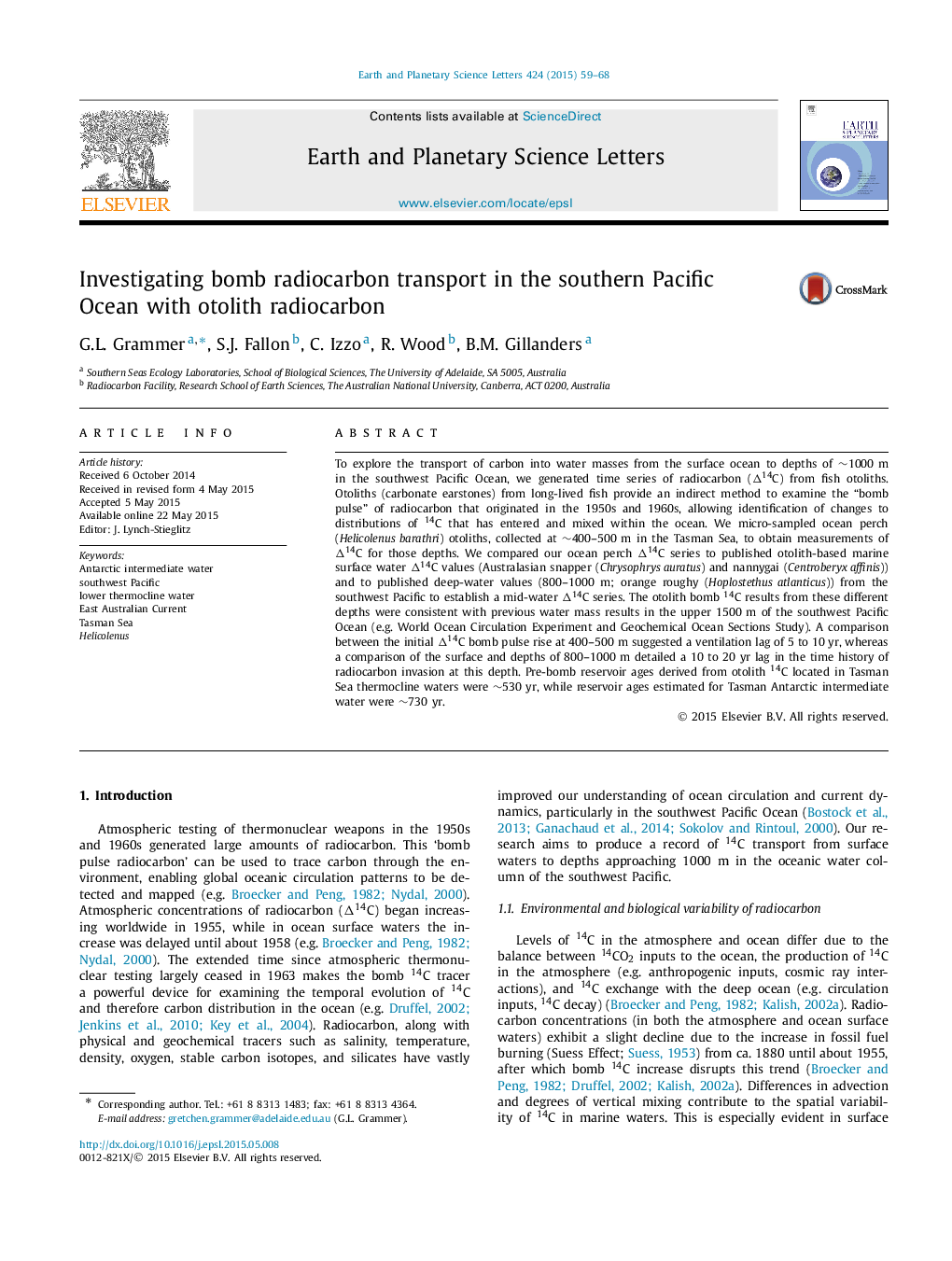| Article ID | Journal | Published Year | Pages | File Type |
|---|---|---|---|---|
| 6428216 | Earth and Planetary Science Letters | 2015 | 10 Pages |
â¢Otolith 14C is used as a water mass tracer and to examine temporal 14C transport.â¢We present a new temporal otolith ÎC14 record for depths below the mixed layer.â¢We link otolith 14C to regional water masses (LTW, AAIW) in the Pacific Ocean.â¢Lags are revealed in the time history of ÎC14 invasion at different depths.â¢A refined process to graphitise carbonate used 4 to 50 times less than prior methods.
To explore the transport of carbon into water masses from the surface ocean to depths of â¼1000 m in the southwest Pacific Ocean, we generated time series of radiocarbon (ÎC14) from fish otoliths. Otoliths (carbonate earstones) from long-lived fish provide an indirect method to examine the “bomb pulse” of radiocarbon that originated in the 1950s and 1960s, allowing identification of changes to distributions of 14C that has entered and mixed within the ocean. We micro-sampled ocean perch (Helicolenus barathri) otoliths, collected at â¼400-500 m in the Tasman Sea, to obtain measurements of ÎC14 for those depths. We compared our ocean perch ÎC14 series to published otolith-based marine surface water ÎC14 values (Australasian snapper (Chrysophrys auratus) and nannygai (Centroberyx affinis)) and to published deep-water values (800-1000 m; orange roughy (Hoplostethus atlanticus)) from the southwest Pacific to establish a mid-water ÎC14 series. The otolith bomb 14C results from these different depths were consistent with previous water mass results in the upper 1500 m of the southwest Pacific Ocean (e.g. World Ocean Circulation Experiment and Geochemical Ocean Sections Study). A comparison between the initial ÎC14 bomb pulse rise at 400-500 m suggested a ventilation lag of 5 to 10 yr, whereas a comparison of the surface and depths of 800-1000 m detailed a 10 to 20 yr lag in the time history of radiocarbon invasion at this depth. Pre-bomb reservoir ages derived from otolith 14C located in Tasman Sea thermocline waters were â¼530 yr, while reservoir ages estimated for Tasman Antarctic intermediate water were â¼730 yr.
